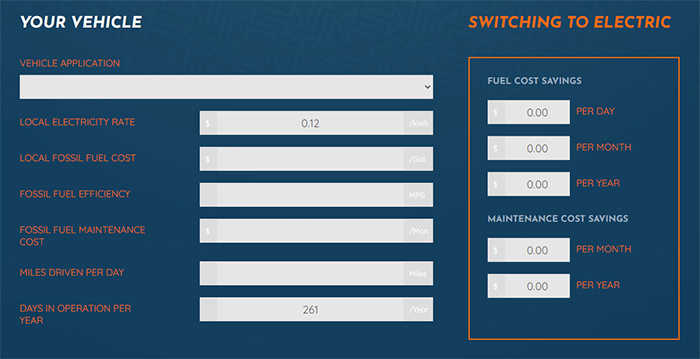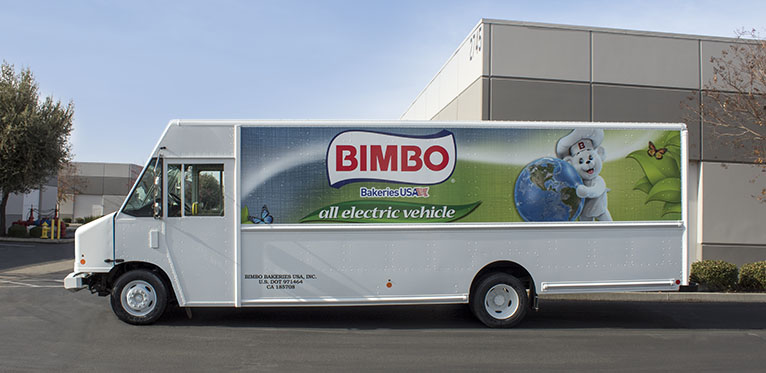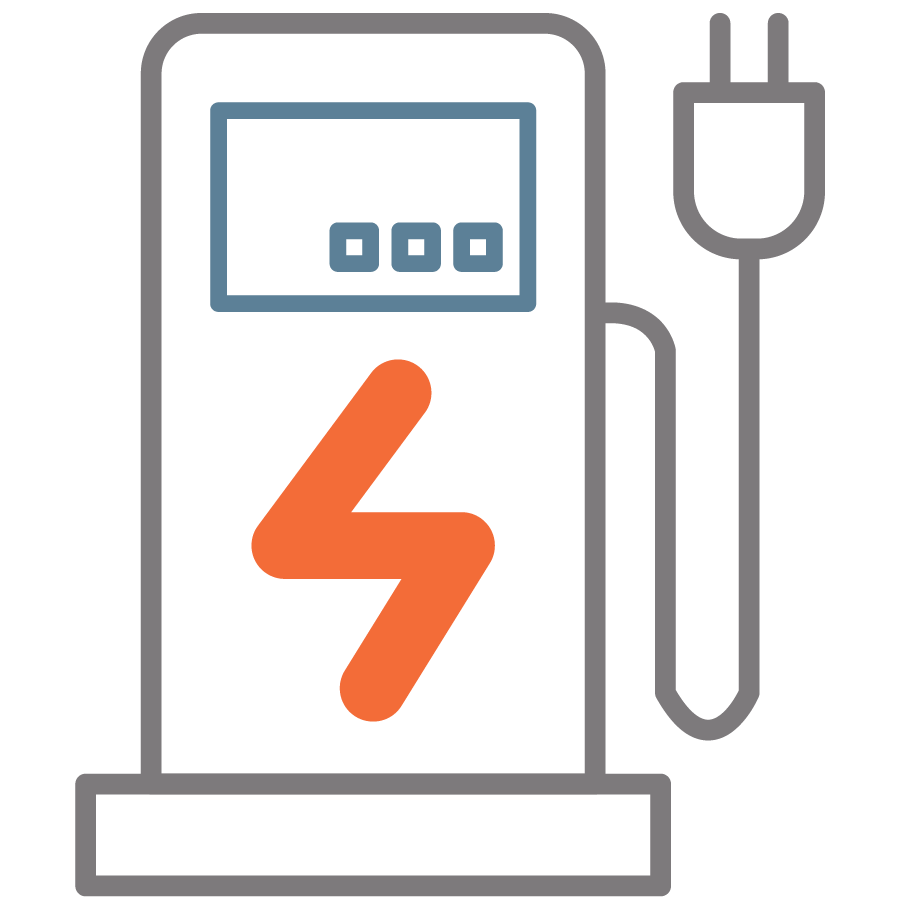8 Key Considerations When Electrifying Your Fleet
Driven by progress in the passenger car segment, the tipping point for electrification across the entire vehicle market is here. The market is gaining momentum as fleets look to reduce costs, meet new regulations, and address social pressures for cleaner transportation options.
Because fleet electrification is more involved than just purchasing an electric vehicle (EV), we have taken over 10 years of experience and compiled a summary of the 8 key considerations when evaluating commercial medium-duty EVs for your fleet.
 1. Routes and Usage Patterns
1. Routes and Usage Patterns
Medium-duty EVs are ideal for fleets with fixed daily routes such as those serviced by shuttle buses, delivery trucks, and school buses. A set number of miles per route removes ambiguity and provides clarity on what kind of battery capacity is needed – one of the most important aspects of designing the right type of vehicle for the job. EV technology is new for medium-duty fleet professionals, and gaining basic knowledge of key terminology will help ensure scoping of the correct battery size after the route and usage patterns are evaluated.
The vehicle’s battery pack efficiency is commonly expressed as kWh/mile (comparable to the unit measure of “miles per gallon” on internal combustion vehicles), or the amount of energy (in kilowatt-hours, or kWh) it takes to drive each mile. Be careful, though, as the real-world kWh/mile may vary dramatically from what some manufacturers report in ideal test-case scenarios. Sometimes the nameplate, or “nominal”, battery energy and the usable battery energy will vary as many battery packs cannot be discharged fully to 0% and drivers will want to return with some nonzero residual energy in their battery pack at the end of the day.
Ask your vehicle manufacturer to provide examples of use cases as a starting point for your own procurement as well as data supporting the real-world range actually achieved by fleets running routes similar to yours. During the initial evaluation stage, Motiv provides recommendations on battery capacity size for your fleet based on your specific needs.

Sample route analysis
 2. Return on Investment
2. Return on Investment
Operating and maintenance (O&M) cost savings and warranty provisions are two of the biggest determinants of EV return on investment (ROI). One of the reasons fleets have adopted EV technology is for total cost of operations (TCO) savings, including O&M savings that help speed up the project’s ROI. Based on learnings from Motiv’s deployments, fleet customers can expect to see up to 85% O&M savings over internal combustion engine (ICE) vehicles. Check out our calculator to understand your potential savings (you’ll need basic fuel and maintenance costs for your current vehicles).

The first steps for fleet professionals include evaluating fuel and maintenance cost savings with our online calculator.
Ask about warranties to understand what exactly is covered and for how long. Battery warranties are frequently cited separately from the vehicle and may include allowance for capacity fade, a condition where the usage of a battery can slowly decrease the total capacity over the vehicles’ lifetime, which could mean minor range reduction.
Two additional questions to ask are:
1) Are extended warranties available for purchase after the original warranty is over?
2) What’s included in the maintenance schedule and what are the service intervals?
 3. Incentives
3. Incentives
In addition to O&M savings, many states, cities, and local sustainability organizations (example Clean Cities) offer rebates, tax credits, and incentives that help offset the upfront costs of EVs. Each program has different requirements, such as requiring the scrapping of old vehicles, route location, and more. With these incentives, process, deadlines, and program requirements are really important to follow and require detailed information to be provided for eligibility.
Upgrading to an electric fleet can also create new revenue streams by monetizing low carbon fuel standard (LCFS) credits. California’s Low Carbon Fuel Standard (LCFS) program estimate electric fleet adoption can generate $5,000 to $8,000 per vehicle per year, depending on usage. Motiv-powered vehicles can generate one LCFS credit for every 600 miles of driving, and with the credit price around $200 today (March 2021), this means a revenue opportunity of $0.33/mile.
The process to secure incentive funding can be lengthy and time-consuming, we encourage our customers to start applying for funding as they start their project. Make sure to partner with a vehicle manufacturer that has a track record of working with fleet customers to collect and report data to secure funding.
 4. Compliance
4. Compliance
The California Advanced Clean Truck (ACT) regulation mandates an increasing percentage of Class 2b-8 truck sales starting in 2024. By 2035, 55% of Class 2b – 3 truck sales, and 75% of Class 4 – 8 will need to be electric. Additionally, a new reporting mandates is taking effect where fleet owners with 50 or more vehicles will need to report on their fleet operations to help identify future strategies for greenhouse gas (GHG) reduction initiatives.
Over a dozen other states have also followed suit with similar mandates. Start planning your vehicle electrification strategy early so that you can meet these regulations without having to rush to meet deadlines. Another reason to get ahead of regulations is that often when regulations come into effect, incentives are phased out.
 5. Sustainability Goals
5. Sustainability Goals
Many organizations enforce carbon reduction targets and monitor their greenhouse gas (GHG) emissions offsets. With zero tailpipe emissions, as well as quantifiable business objectives, fleet electrification can accomplish both. Additionally, supply chain driven sustainability mandates now require more transparency and compliance with carbon-reduction measures.

Bimbo Bakeries USA's Motiv-powered all-electric step van.
“Sustainability is built into Bimbo Bakeries’ purpose and incorporating these vehicles into our fleet is an important step toward reducing our dependence on fossil fuels. With Motiv’s help, we’re confident that we will meet our goals.” — Eric McCann, Technical Fleet Manager at Bimbo Bakeries USA. (Nov. 10, 2020)
 6. Charging Infrastructure
6. Charging Infrastructure
Charging Infrastructure consists of the charge stations, also known as Electric Vehicle Supply Equipment (EVSE), and the electrical wiring, conduits, panels, transformers, and other electrical equipment necessary to get power into your electric vehicle. Charging infrastructure can be a much larger and more complex system for commercial vehicles since their daily electrical energy use is much higher than electric passenger cars.
Commercial charging infrastructure is not one-size-fits-all. Charging infrastructure should be “right-sized” to the fleet and to the daily energy needs of those vehicles. Many charging infrastructure providers are not trying to optimize the same cost structure as the fleet operator; they are looking to install the largest project, not necessarily a right-sized, efficient system. Not right-sizing your charging infrastructure can triple its cost and significantly impact ROI. Work closely with the vehicle manufacturer to understand what the vehicle charging capability is, and what the daily energy usage of vehicles will be, in order to ensure you install the right number of charge stations with the right power per station and overall power at a given site.
Oversizing any of charging infrastructure metrics can also dramatically increase the cost and the timeline of the build-out. Another consideration is how you will get any charging infrastructure hardware and software issues resolved. If you are not sure when the station or the vehicle is the source of the issue, do you have a trusted partner who will get things fixed expediently either way? Motiv deploys the infrastructure along with the vehicle, and due to intimate knowledge of the vehicle and its use case, will provide right-sized infrastructure and the most competitive price and fastest timeline with a single point of contact. To learn more about charging, check out our blog on the Fundamentals of EV Fleet Charging Technology.
 7. Driver Training and Vehicle Support
7. Driver Training and Vehicle Support
As with any new technology, formal training upon initial and any subsequent vehicle deployments will help ensure project success. Many of the fleets who receive driver training after the initial deployment see an increase in range efficiency.
Documenting driver feedback is essential and can assist with further product improvements, new feature development, and route optimization. Early adopters of EVs report certain drivers become EV evangelists. In addition to less vibrations, engine heat, toxic emissions, and noise, our fleet operators report some unexpected benefits of driving electric trucks, including less fatigue that comes with single-pedal regenerative breaking and more time spent with customers vs fueling. Fleet managers have leaned on these evangelists for future training and they’ve become an important part of subsequent implementations.
Vehicle support starts with proper vehicle maintenance training at the start of each deployment. Empowering operators with simple pre-shift inspection practices ensures fleet longevity. To maintain best fleet uptime performance, make sure your vehicle manufacturer has a dedicated local support team to provide quick and convenient service if/when needed.

Driver Training at Community Resource Project, Sacramento, California
 8. Vehicle Performance
8. Vehicle Performance
It’s important to collect and evaluate driver and depot manager feedback, especially early on in the deployment. A key indicator of success in vehicle deployment is measured by uptime. We calculate fleet uptime on a weekly basis, counting vehicle down days as a percentage of total vehicles in service. Motiv-powered vehicles show high (98% and above) uptime performance – fleet reliability metrics that only Motiv is publishing thanks to our years of reliable field experience.

Sample customer uptime report
From your experience, what else should fleets consider when electrifying their fleets? Sometimes the best way to see if an EV is right for your medium-duty fleet is to get behind the wheel. Schedule a demo and take ours for a spin!